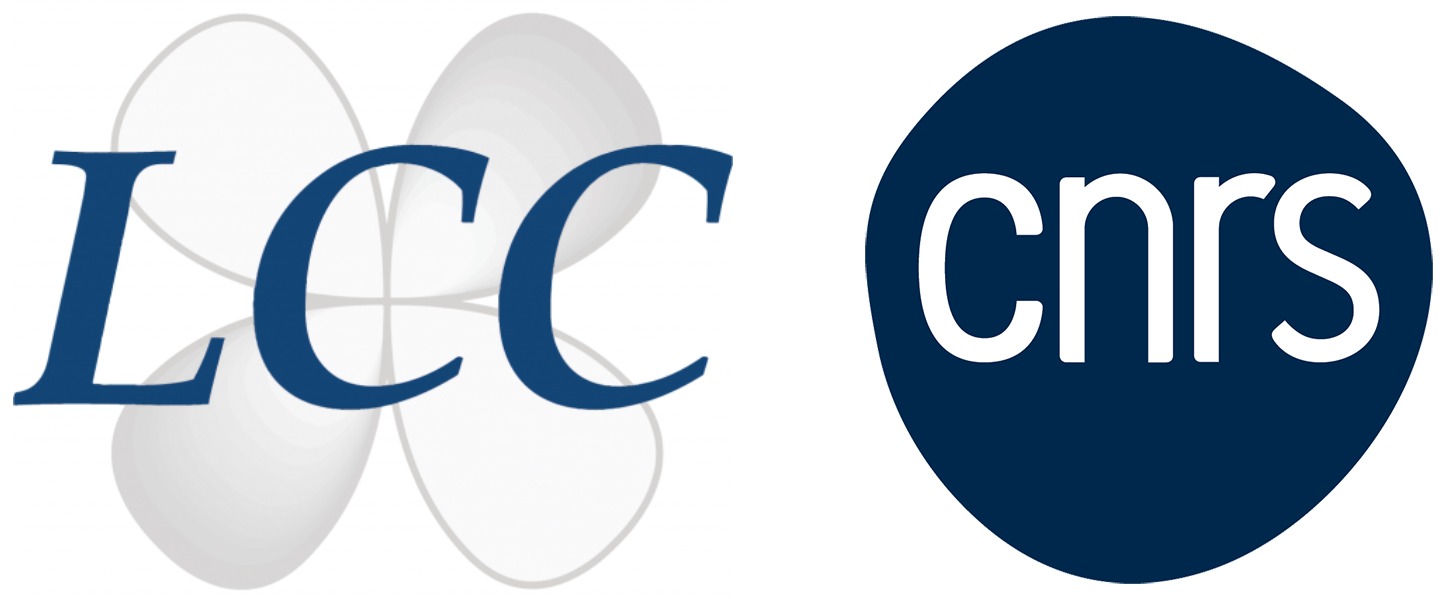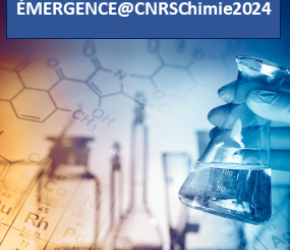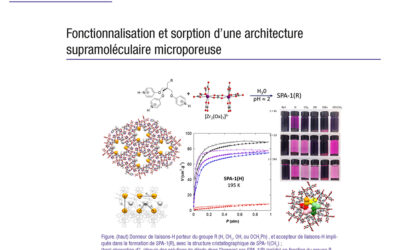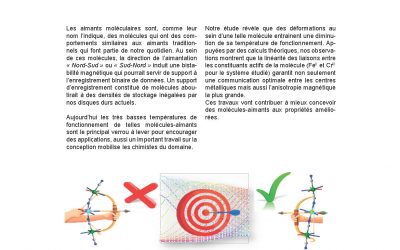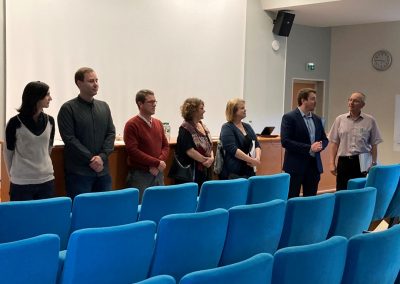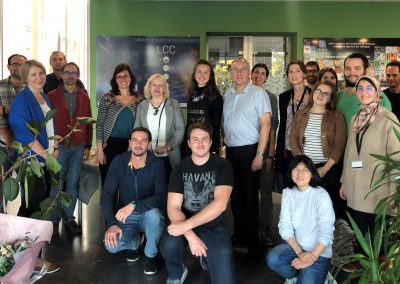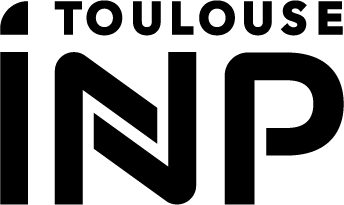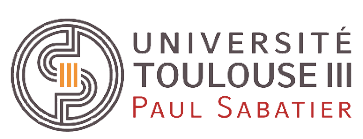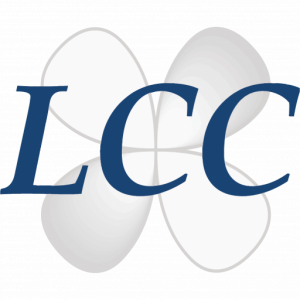LCC
Activités de l’équipe
L’équipe Matériaux Moléculaires et Supramoléculaires développe une recherche fondamentale centrée sur la conception d’organisations moléculaires aux propriétés chimiques, physiques et/ou structurales remarquables. De telles caractéristiques confèrent une identité au composé, il devient matériau. Notre approche de l’élaboration de matériaux supramoléculaires est fondée sur l’assemblage de briques moléculaires en édifices étendus par le biais de liaisons de coordination ou de liaisons-H.
A l’interface de la chimie et de la physique, nous exploitons des propriétés électroniques (interaction d’échange, anisotropie magnétique, luminescence) de composés de coordination des éléments de transition et des ions de terres-rares pour réaliser des matériaux magnétiques, aimants et nano-aimants de type SMM ou SCM (Single-Molecule Magnet ou Single-Chain Magnet).
Nous explorons également une approche originale vers des architectures microporeuses utilisant la liaison hydrogène ionique comme ciment de structures 3D ouvertes.
Nos travaux se développent autour de trois thèmes :
- Les matériaux magnétiques anisotropes (SMM, SCM),
- Les aimants moléculaires multi-propriétés (multiferroïques et magnéto-optiques),
- Les architectures supramoléculaires poreuses.
Membres de l’équipe
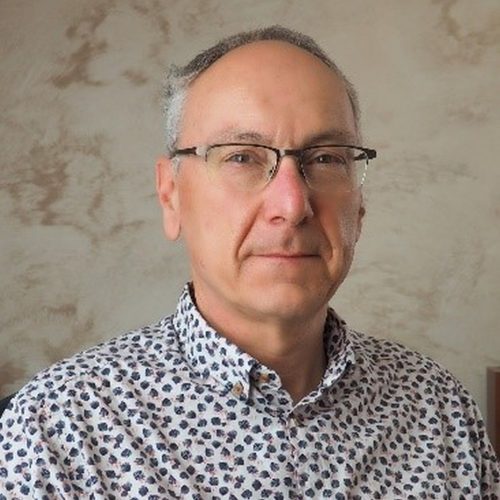
SUTTER Jean-Pascal
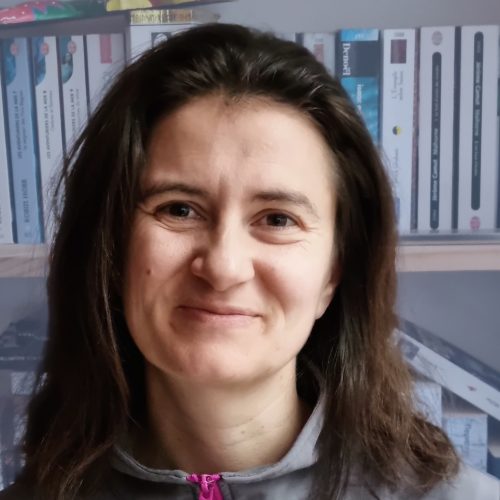
BARTHES Cécile
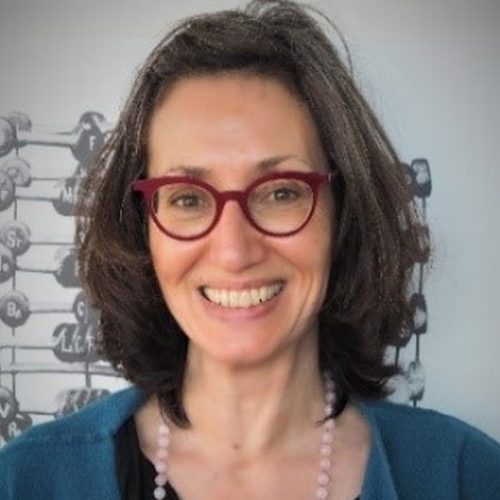
BEREAU Virginie
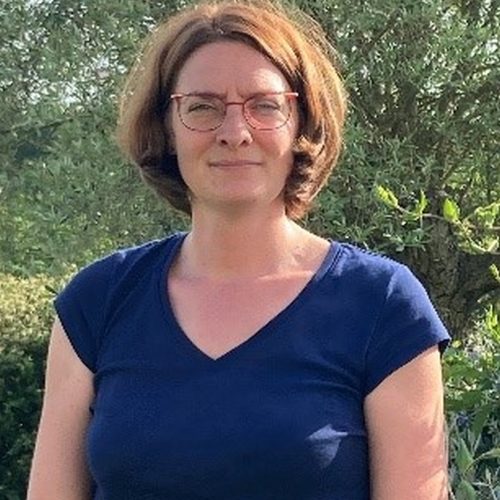
DELAHAYE Emilie
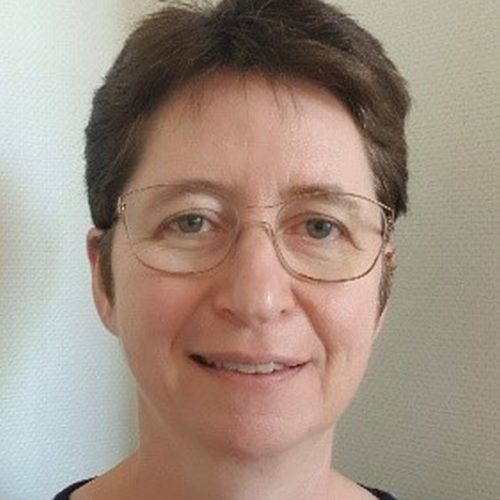
DUHAYON Carine

GANESAN Parameshwari

MARTINEZ Dylan
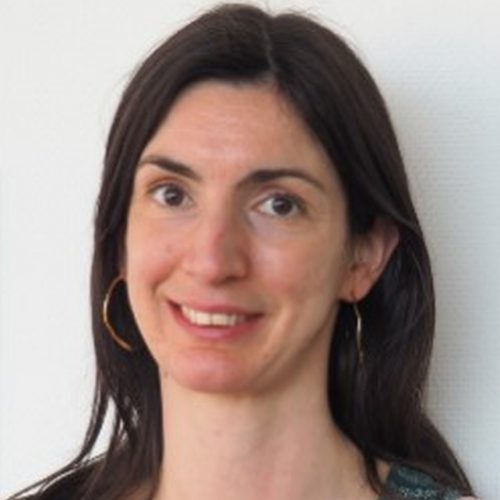
PICHON Céline

ROQUES Nans

SAJEEV Devika
Aucun résultat trouvé
Thèmes de recherche
Matériaux magnétiques anisotropes
Le fil directeur de notre démarche est le contrôle de l’anisotropie magnétique par une conception chimique rationnelle.
Aimants moléculaires multifonctionnels
Le magnétisme se combine avec des propriétés optiques ou diélectriques pour accéder à des propriétés magnéto-optiques ou magnéto-électriques (multiferroïcité).
Architectures supramoléculaires poreuses
Approche originale vers des architectures microporeuses utilisant la liaison hydrogène ionique comme ciment de structures 3D ouvertes.
Actualités de l’équipe
Appel à projet EMERGENCE@CNRSChimie2024
Emilie DELAHAYE est lauréate Emergence pour son projet intitulé :
« Etude d’AImants Moléculaires multiferrOIques – AIMMOI »
Fait marquant 2022 Equipe S
Des complexes de coordination chargés négativement et des cations organiques ont permis de créer des liaisons ioniques plus fortes, permettant l’accès à une série de structures poreuses avec différentes caractéristiques de sorption.
Fait marquant 2021 Equipe S
La brochure des temps forts 2021 du laboratoire de chimie de coordination présente : "Être ou ne...
Publications
2024
A simple reaction pathway allowing easy EPR characterization of N-oxyl radicals
Costes J.-P.
New Journal of Chemistry 2024, 48(18), 8034-8037.
http://dx.doi.org/10.1039/D4NJ00943F
https://hal.science/hal-04575708
Selective fluoride sensing by a novel series of lanthanide-based one-dimensional coordination polymers through intramolecular proton transfer
Singh V., Suresh L. T., Sutter J.-P., Bar A. K.
Dalton Transactions 2024, 53(17), 7436-7449.
http://dx.doi.org/10.1039/D4DT00598H
https://hal.science/hal-04550862
2023
Turn-off luminescence sensing, white light emission and magnetic studies of two-dimensional lanthanide MOFs
Manna K., Sutter J.-P., Natarajan S.
Dalton Transactions 2023, 52(48), 18449-18463.
http://dx.doi.org/10.1039/D3DT01882B
https://hal.science/hal-04387033
Trigonal prismatic coordination geometry imparted by a macrocyclic ligand: An approach to large axial magnetic anisotropy for Co(ii)
Zahradníková E., Sutter J.-P., Halaš P., Drahoš B.
Dalton Transactions 2023, 52(48), 18513-18524.
http://dx.doi.org/10.1039/D3DT02639F
https://hal.science/hal-04341860
Structural determinations of homo and heterodi- or tetra-nuclear lanthanide complexes and their characterization by μ-Squid experiments
Costes J.-P., Duhayon C., Vendier L., Wernsdorfer W.
Polyhedron 2023, 246, 116699/1-8.
https://doi.org/10.1016/j.poly.2023.116699
https://hal.science/hal-04304533
Cyclic [Cu-biRadical]2 secondary building unit in 2p-3d and 2p-3d-4f Complexes: Crystal structure and magnetic properties
Wang X.-T., Huang X.-H., Song H.-W., Ma Y., Li L.-C., Sutter J.-P.
Molecules 2023, 28(6), 2514/1-13.
https://doi.org/10.3390/molecules28062514
https://hal.science/hal-04023710
Slow magnetic relaxation in a homoaxially phosphine oxide coordinated pentagonal bipyramidal Dy(iii) complex
Kalita P., Ahmed N., Moorthy S., Béreau V., Bar A. K., Kumar P., Nayak P., Sutter J.-P., Singh S. K., Chandrasekhar V.
Dalton Transactions 2023, 52(9), 2804-2815.
http://dx.doi.org/10.1039/D2DT03789K
https://hal.science/hal-04016194
Evidence of symmetry breaking in a Gd2 di-nuclear molecular polymer
Ekanayaka T. K., Jiang T., Delahaye E., Perez O., Sutter J.-P., Le D., N’Diaye A. T., Streubel R., Rahman T. S., Dowben P. A.
Physical Chemistry Chemical Physics 2023, 25(8), 6416-6423.
http://dx.doi.org/10.1039/D2CP03050K
https://hal.science/hal-04002458
Enhancing the magnetization blocking energy of biradical-metal system by merging discrete complexes into one-dimensional chains
Xie J., Han J., Huang X., Jin C.-Y., Li L., Sutter J.-P.
Chemistry – A European Journal 2023, 29(16), e202203852/1-10.
https://doi.org/10.1002/chem.202203852
https://hal.science/hal-03992356
Homochiral SCM built of tetrahedral and pentagonal bipyramidal Fe(II) units bridged by chlorine
Jubault V., Pradines B., Pichon C., Suaud N., Duhayon C., Guihéry N., Sutter J.-P.
Crystal Growth & Design 2023, 23(2), 1229-1237.
https://doi.org/10.1021/acs.cgd.2c01360
https://hal.science/hal-03981782
Pentagonal bipyramidal 3 d-metal complexes derived from a dimethylcarbamoyl-substituted pentadentate-[N3O2] ligand: Aiming for increased solubility
Jubault V., Genevois F., Pradines B., Cahier B., Jbeli W., Suaud N., Guihéry N., Duhayon C., Pichon C., Sutter J.-P.
ChemistrySelect 2023, 8(4), e202204935/1-10.
https://doi.org/10.1002/slct.202204935
https://hal.science/hal-03955461
2022
Blue-emitting ligand-mediated assembly of rare-earth MOFs toward white-light emission, sensing, magnetic, and catalytic studies
Manna K., Sutter J.-P., Natarajan S.
Inorganic Chemistry 2022, 61(42), 16770-16785.
https://doi.org/10.1021/acs.inorgchem.2c02611
https://hal.archives-ouvertes.fr/hal-03846612
Cu-Ln complexes involving non-symmetrical ligands able to introduce asymmetric centres in the vicinity of Ln ions
Zohra Chiboub Fellah F., Duhayon C., Mallet-Ladeira S., Vendier L., Costes J.-P.
Polyhedron 2022, 224116015/1-9.
https://doi.org/10.1016/j.poly.2022.116015
https://hal.archives-ouvertes.fr/hal-03813018
Perspective: Molecular transistors as substitutes for quantum information applications
Dhingra A., Hu X. B., Borunda M. F., Johnson J. F., Binek C., Bird J., N’Diaye A. T., Sutter J.-P., Delahaye E., Switzer E. D., del Barco E., Rahman T. S., Dowben P. A.
Journal of Physics: Condensed Matter 2022, 34(44), 441501/1-10.
https://doi.org/10.1088/1361-648X/ac8c11
https://hal.archives-ouvertes.fr/hal-03790224
Modulation of the sorption characteristics for an H-bonded porous architecture by varying the chemical functionalization of the channel walls
Roques N., Tovar-Molle A., Duhayon C., Brandès S., Spieß A., Janiak C., Sutter J.-P.
Chemistry – A European Journal, 2022, 28(61), e202201935/1-10.
https://doi.org/10.1002/chem.202201935
https://hal.archives-ouvertes.fr/hal-03767128
Rigid N3O2-pentadentate ligand-assisted octacoordinate mononuclear Ln(III) complexes: Syntheses, characterization, and slow magnetization relaxation
Singh V., Das D., Anga S., Sutter J.-P., Chandrasekhar V., Bar A. K.
ACS Omega 2022, 7(29), 25881-25890.
https://doi.org/10.1021/acsomega.2c03631
https://hal.archives-ouvertes.fr/hal-03746500
A new nitronyl-nitroxide ligand for designing binuclear LnIII complexes: Syntheses, crystal structures, magnetic and EPR studies
Răducă M., Martins D. O. T. A., Spinu C. A., Hillebrand M., Tuna F., Ionita G., Mădălan A. M., Lecourt C., Sutter J.-P., Andruh M.
European Journal of Inorganic Chemistry 2022, 2022(16), e202200128/1-12.
https://doi.org/10.1002/ejic.202200128
https://hal.archives-ouvertes.fr/hal-03689254
Supramolecular heptanuclear Ln–Cu complexes involving nitronyl nitroxide biradicals: structure and magnetic behavior
Xi L., Jin C.-Y., Song H.-W., Wang X.-T., Li L.-C., Sutter J.-P.
Dalton Transactions 2022, 51(22), 6955-6963.
http://dx.doi.org/10.1039/D2DT00220E
https://hal.archives-ouvertes.fr/hal-03673824
Structural determinations and magnetic properties of a “chiral at metal” complex and its resulting [Cu–Ln]2 compounds
Costes J.-P., Duhayon C., Vendier L., Wernsdorfer W.
Dalton Transactions 2022, 51(7), 2805-2814.
http://dx.doi.org/10.1039/D1DT04249A
https://hal.archives-ouvertes.fr/hal-03592049
Magnetic anisotropy of transition metal and lanthanide ions in pentagonal bipyramidal geometry
Sutter J.-P., Béreau V., Jubault V., Bretosh K., Pichon C., Duhayon C.
Chemical Society Reviews 2022, 51(8), 3280-3313.
http://dx.doi.org/10.1039/D2CS00028H
https://hal.archives-ouvertes.fr/hal-03673750
Structurally characterised new twisted conformer for cyclen, controlled by metal ion complexation as seen in NiII and CuII complexes with halides and pseudohalides
Verma A., Bhuvanesh N., Reibenspies J., Tayade S. B., Kumbhar A. S., Bretosh K., Sutter J.-P., Sunkari S. S.
CrystEngComm 2022, 24(1), 119-131.
http://dx.doi.org/10.1039/D1CE01096D
https://hal.archives-ouvertes.fr/hal-03509672
2021
Discrete versus 1D compounds based on pentagonal bipyramid coordination geometries: A matter of solubility?
Pichon C., Duhayon C., Delahaye E., Sutter J.-P.
European Journal of Inorganic Chemistry 2021, 2021(48), 5112-5118.
https://doi.org/10.1002/ejic.202100834
https://hal.archives-ouvertes.fr/hal-03510193
Trinuclear cyanido-bridged [Cr2Fe] complexes: To be or not to be a single-molecule magnet, a matter of straightness
Pichon C., Suaud N., Jubault V., Duhayon C., Guihéry N., Sutter J.-P.
Chemistry – A European Journal 2021, 27(62), 15484-15495.
https://doi.org/10.1002/chem.202102571
https://hal.archives-ouvertes.fr/hal-03424346
A metal-radical hetero-tri-spin SCM with methyl–pyrazole–nitronyl nitroxide bridges
Huang X., Wang K., Han J., Xie J., Li L., Sutter J.-P.
Dalton Transactions 2021, 50(34), 11992-11998.
http://dx.doi.org/10.1039/D1DT02006D
https://hal.archives-ouvertes.fr/hal-03361525
Octahedral hexachloro environment of Dy3+ with slow magnetic relaxation and luminescent properties
Benamara N., Diop M., Leuvrey C., Lenertz M., Gilliot P., Gallart M., Bolvin H., Setifi F., Rogez G., Rabu P., Delahaye E.
European Journal of Inorganic Chemistry 2021, 2021(22), 2099-2107.
https://doi.org/10.1002/ejic.202100143
https://hal.archives-ouvertes.fr/hal-03268319
Synthesis, crystal structure, magnetic, spectroscopic, and theoretical investigations of two new nitronyl-nitroxide complexes
Spinu C. A., Pichon C., Ionita G., Mocanu T., Calancea S., Raduca M., Sutter J.-P., Hillebrand M., Andruh M.
Journal of Coordination Chemistry 2021, 74(1-3), 279-293.
https://doi.org/10.1080/00958972.2021.1871900
https://hal.archives-ouvertes.fr/hal-03188807
Stuffed tridymite structures: Synthesis, structure, second harmonic generation, optical, and multiferroic properties
Bhim A., Sutter J.-P., Gopalakrishnan J., Natarajan S.
Chemistry – A European Journal 2021, 27(6), 1995-2008.
https://doi.org/10.1002/chem.202004078
https://hal.archives-ouvertes.fr/hal-03241518
Accessing water processable cyanido bridged chiral heterobimetallic Co(II)–Fe(III) one dimensional network
Choudhury A., Pichon C., Sutter J.-P., Pamu D., Sarma B., Mudoi P. P., Gogoi N.
Chemical Communications 2021, 57(2), 207-210.
http://dx.doi.org/10.1039/D0CC05356B
https://hal.archives-ouvertes.fr/hal-03131086
2020
Concomitant emergence of circularly polarized luminescence and single-molecule magnet behavior in chiral-at-metal Dy complex
El Rez B., Liu J., Béreau V., Duhayon C., Horino Y., Suzuki T., Coolen L., Sutter J.-P.
Inorganic Chemistry Frontiers 2020, 7(22), 4527-4534.
http://dx.doi.org/10.1039/D0QI00919A
https://hal.archives-ouvertes.fr/hal-03035601
Crystal structure and magnetic properties of Peacock–Weakley type polyoxometalates Na9[Ln(W5O18)2] (Ln = Tm, Yb): Rare Example of Tm(III) SMM
Mariichak O. Y., Kaabel S., Karpichev Y. A., Rozantsev G. M., Radio S. V., Pichon C., Bolvin H., Sutter J.-P.
Magnetochemistry 2020, 6(4), 53/1-14.
https://doi.org/10.3390/magnetochemistry6040053
https://hal.archives-ouvertes.fr/hal-02975464
Molybdenum(III) thiocyanate- and selenocyanate-based one-dimensional heteronuclear polymers: Coordination affinity-controlled assemblage of mixed spin and mixed valence derivatives with Ni(II) and Co(II/III)
Mousavi M., Duhayon C., Bretosh K., Béreau V., Sutter J. P.
Inorganic Chemistry 2020, 59(11), 7603-7613.
https://doi.org/10.1021/acs.inorgchem.0c00459
https://hal.archives-ouvertes.fr/hal-02749318
Single-chain magnet behavior in a 2p–3d–4f spin array with a nitronyl nitroxide biradical
Sun J., Xie J., Li L., Sutter J. P.
Inorganic Chemistry Frontiers 2020, 7(9), 1949-1956.
http://dx.doi.org/10.1039/D0QI00098A
https://hal.archives-ouvertes.fr/hal-02569569
Pentagonal bipyramidal Ln(III) complexes containing an axial phosphine oxide ligand: Field-induced single-ion magnetism behavior of the Dy(III) analogues
Kalita P., Ahmed N., Bar A. K., Dey S., Jana A., Rajaraman G., Sutter J. P., Chandrasekhar V.
Inorganic Chemistry 2020, 59(9), 6603-6612.
https://doi.org/10.1021/acs.inorgchem.0c00751
https://hal.archives-ouvertes.fr/hal-02565216
A ferromagnetic Ni(II)–Cr(III) single-chain magnet based on pentagonal bipyramidal building units
Bretosh K., Béreau V., Duhayon K., Pichon C., Sutter J. P.
Inorganic Chemistry Frontiers 2020, 71503-1511.
https://doi.org/10.1039/C9QI01489F
https://hal.archives-ouvertes.fr/hal-02533614
Role of the main and auxiliary ligands in the nuclearity of Cu-Ln complexes
Costes J.-P., Rodriguez Douton M.-J., Shova S., Vendier L.
European Journal of Inorganic Chemistry 2020, 2020(4), 382-393.
https://doi.org/10.1002/ejic.201901150
https://hal.archives-ouvertes.fr/hal-02489672
2019
Mononuclear lanthanide complexes containing [O-O]-chelating sulfonylamidophosphate type ligands
Prytula-Kurkunova A. Y., Pichon C., Duhayon C., Amirkhanov V. M., Sutter J. P.
European Journal of Inorganic Chemistry 2019, (42), 4592-4596.
https://doi.org/10.1002/ejic.201900976
https://hal.archives-ouvertes.fr/hal-02367488
Controlled growth of Ag nanocrystals in a H-bonded open framework
Khodja W., Collière V., Kahn M. L., Roques N., Sutter J.-P.
Chemistry – A European Journal 2019, 25(60), 13705-13708.
https://doi.org/10.1002/chem.201903684
https://hal.archives-ouvertes.fr/hal-02338823
Contribution of 155Gd Mössbauer data to the study of the magnetic interaction in heterodinuclear 3d–Gd (3d = Cu, Ni) coordination complexes
Ayabe T., Costes J.-P., Vendier L., Geist A., Takeda M., Takahashi M.
Dalton Transactions 2019, 48(20), 6872-6878.
http://dx.doi.org/10.1039/C9DT01336A
https://hal.archives-ouvertes.fr/hal-02330528
Effects of the exchange coupling on dynamic properties in a series of CoGdCo complexes
Costes J.-P., Novitchi G., Vieru V., Chibotaru L. F., Duhayon C., Vendier L., Majoral J.-P., Wernsdorfer W.
Inorganic Chemistry 2019, 58(1), 756-768.
https://doi.org/10.1021/acs.inorgchem.8b02921
https://hal.archives-ouvertes.fr/hal-01991167
Improved single-chain-magnet behavior in a biradical-based nitronyl nitroxide-Cu–Dy chain
Xie J., Li H.-D., Yang M., Sun J., Li L.-C., Sutter J.-P.
Chemical Communications 2019, 55(23), 3398-3401.
http://dx.doi.org/10.1039/C9CC00570F
https://hal.archives-ouvertes.fr/hal-02140754
Template directed synthesis of half condensed Schiff base complexes of Cu(II) and Co(III): Structural and magnetic studies
Pandey P., Verma A., Bretosh K., Sutter J.-P., Sunkari S. S.
Polyhedron 2019, 164, 80-89.
https://doi.org/10.1016/j.poly.2019.02.037
https://hal.archives-ouvertes.fr/hal-02140510
Use of 155Gd, 151Eu, 166Er Mössbauer spectroscopy to characterize heterodinuclear Ln–Ln′ complexes
Costes J.-P., Nicodème F., Ayabe T., Takeda M., Takahashi M.
Polyhedron 2019, 174, 114154/1-6.
https://doi.org/10.1016/j.poly.2019.114154
https://hal.archives-ouvertes.fr/hal-02445240
Influence of ancillary ligands and solvents on the nuclearity of Ni–Ln complexes
Costes J.-P., Mallet-Ladeira S., Vendier L., Maurice R., Wernsdorfer W.
Dalton Transactions 2019, 48(10), 3404-3414.
http://dx.doi.org/10.1039/C9DT00370C
https://hal.archives-ouvertes.fr/hal-02063674
Alumnae
Cliquez-ici pour consulter
Permanents
Maritie Garnier (2018-2019)
Dr. Jean-Pierre Costes (2013)
Post-doctorants et ATER
Constance Lecourt (01/2021- 06/2021)
Mathilde Boce (12/2018-05/2019)
Raphaël Nougue (02/2018-01/2019)
Arun Bar (2013-2015)
Fatéma Chiboub (06/2010-08/2010 et 11/2010-12/2010)
Nayan Gogoi (2009-2011)
Nicolas Bréfuel (2006-2007)
Venkatakrishnan Thengarai (2005-2007)
Franck Thetiot (2005-2007)
Doctorants (année de soutenance de thèse)
Valentin Jubault (2022)
Kateryna Bretosh (2019)
Walid Khodja (2019)
Marion Gualino-Tamonino (2015)
Bahjat El Rez (2015)
Mahmoud Maksoud (2013)
Georges Mouchaham (2012)
Maliheh Mousavi (2011)
Julie Milon (2008)
Stagiaires M2
Yuliia Oleski (2022)
Femi Tharakan (2022)
François Genevois (2022)
Anthony Tovar-Molle (2019)
Akane Okunage (2019)
Andrii Zhluktar (2018)
Dominique Stein (2016)
Rana Hamze (2016)
Mehrez Thlijeni (2012)
Bahjat Elrez (2011)
Georges Mouchaham (2009)
Mohammad El Ezzi (2009)
Cyril Tinguely (2005)
Stagiaires M1
Loïc Pinto (2023)
Maxime Provost (2021)
Samy Aïssou (2019)
Anthony Tovar-Molle (2018)
Karisma Patel (2017)
Shinozuke Miyamoto (2017)
Ayaka Sera (2013)
Hamza Alkhazraji (2009)
Sébastien Dehrs (2009)
Stagiaires L1-L3
Ines Boubadjou (2023)
Justine Ambite (2023)
Ariadna Anton (2023)
Antonin Dufour (2022)
Mary Tabut (2021)
Sébastien Dehrs (2007 et 2008)
Damien Villenave (2007)
Elias Castel (2007)
Mélanie Bousquet (2007)
Komla Ako (2007)
Mélanie Ferrié (2006)
Chercheurs invités
Hironori Hamaguchi (2023)
Bohuslav Drahoš (2022)
Wejden Jbebli (2020)
Souhir Haddaoui (2020)
Cristiab Spinu (2020)
Mihai Raduca (2020)
Djaafar Meziani (2016)
Angelina Pritula (2014 et 2015)
Monia Hamdouni (2011 et 2012)
Traian Pasatoiu (2008 et 2009)
Emi Evangelio (2006 et 2008)
Soutenance de thèse de Valentin Jubault
12 avril 2022. Valentin et son jury (de gauche à droite) : Dr Céline Pichon, Dr Bohuslav Drahoš, Prof. Cyrille Train, Prof. Nathalie Guihéry, Dr. Elizabeth Hillard, Dr Valentin Jubault etDr Jean-Pascal Sutter.
LCC CNRS
Laboratoire de chimie de coordination du CNRS
205 route de Narbonne, BP 44099
31077 Toulouse cedex 4
France
